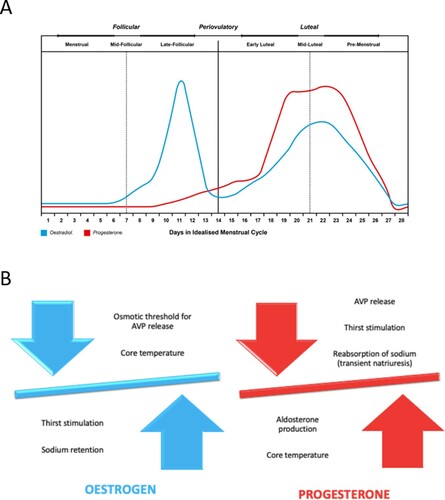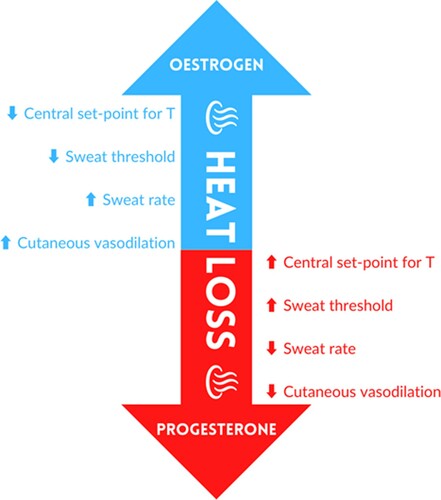Figures & data
Figure 1. Normal regulation of fluid and electrolyte balance showing usual processes for gain in body water (INPUT) and loss of body water (OUTPUT) with stimulation of hormonal controls of fluid and electrolyte regulation through arginine vasopressin (AVP) release, and activation of the renin-angiotensin-aldosterone system (RAAS).

Figure 2. Hormonal fluctuations of oestrogen and progesterone during the different phases of the menstrual cycle (A), and influence of oestrogen and progesterone on factors involved in regulation of body fluid and electrolyte balance (B).

Table 1. Differences in female sex hormone concentrations reported across menstrual cycle phases in a range of studies assessing menstrual cycle influences on fluid balance, sport performance, injury risk, and thermoregulation. Values are mean ± SD unless otherwise indicated. The overall mean (range) of values highlights the large inter-individual variability in responses across menstrual cycle phases.
Figure 3. Theoretical influences of oestrogen and progesterone on heat dissipation / conservation mechanisms.

